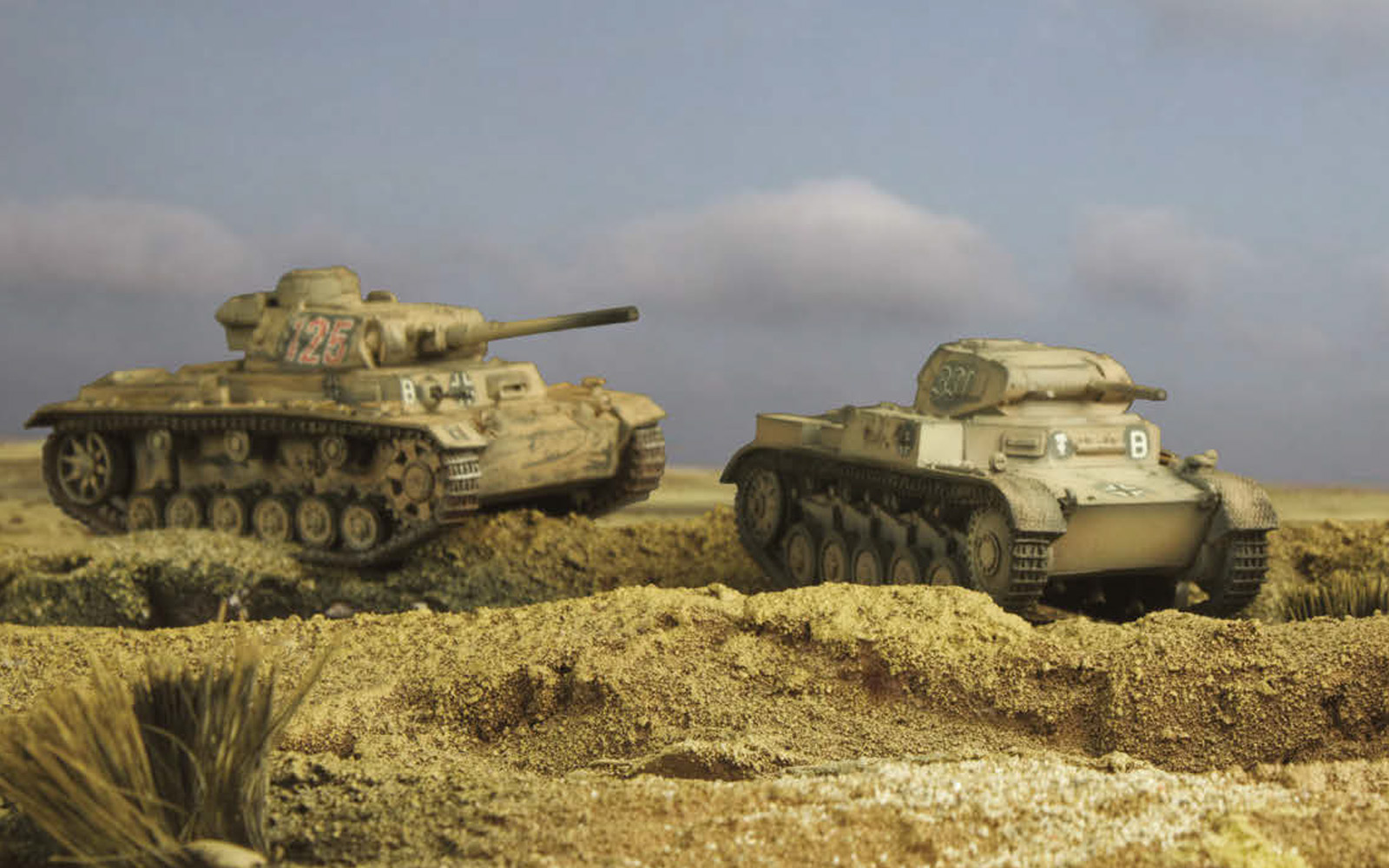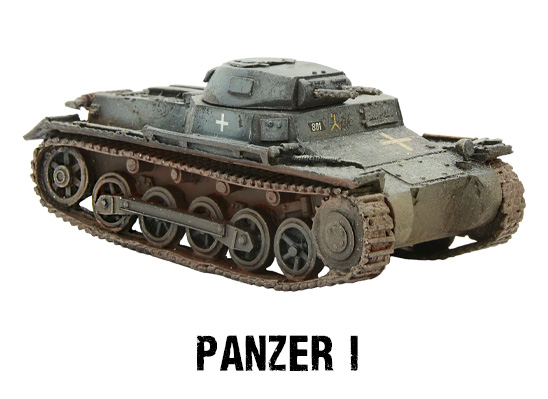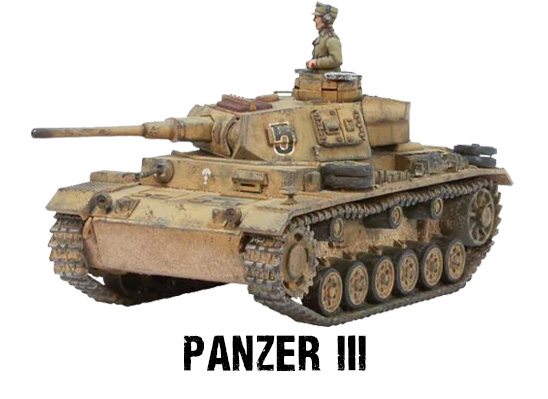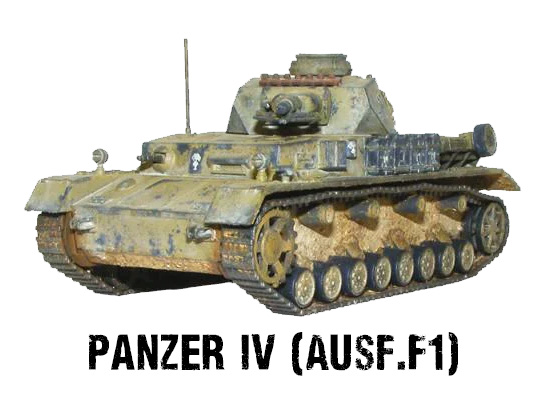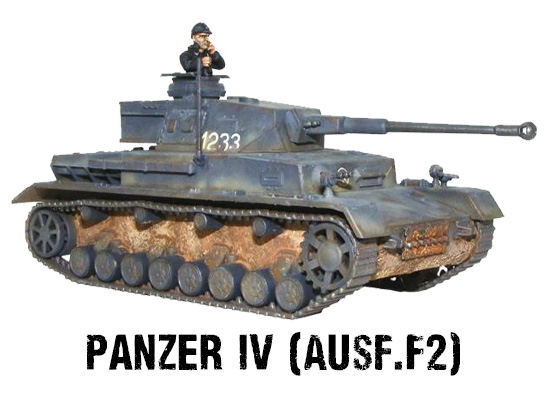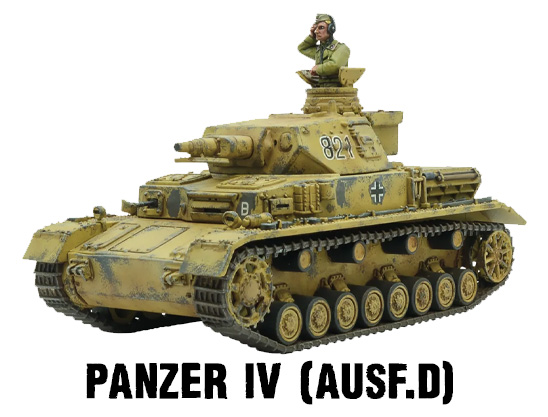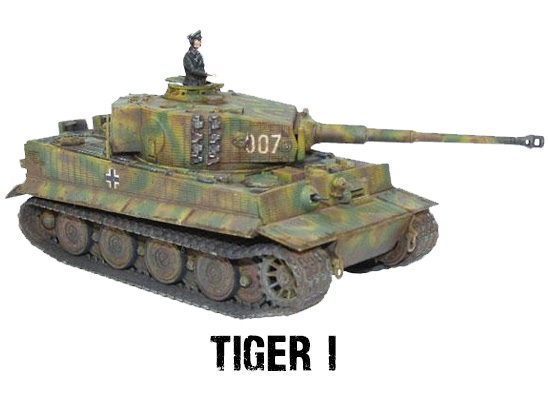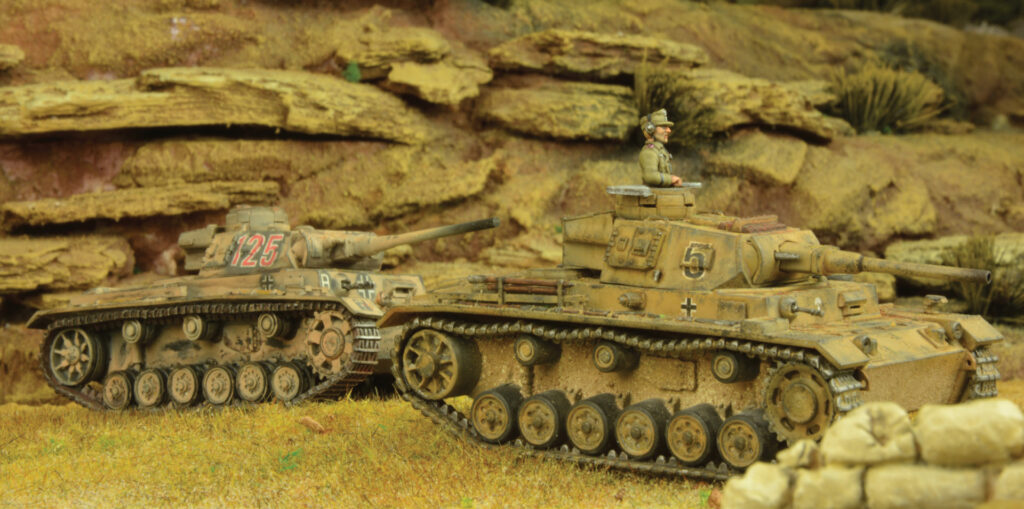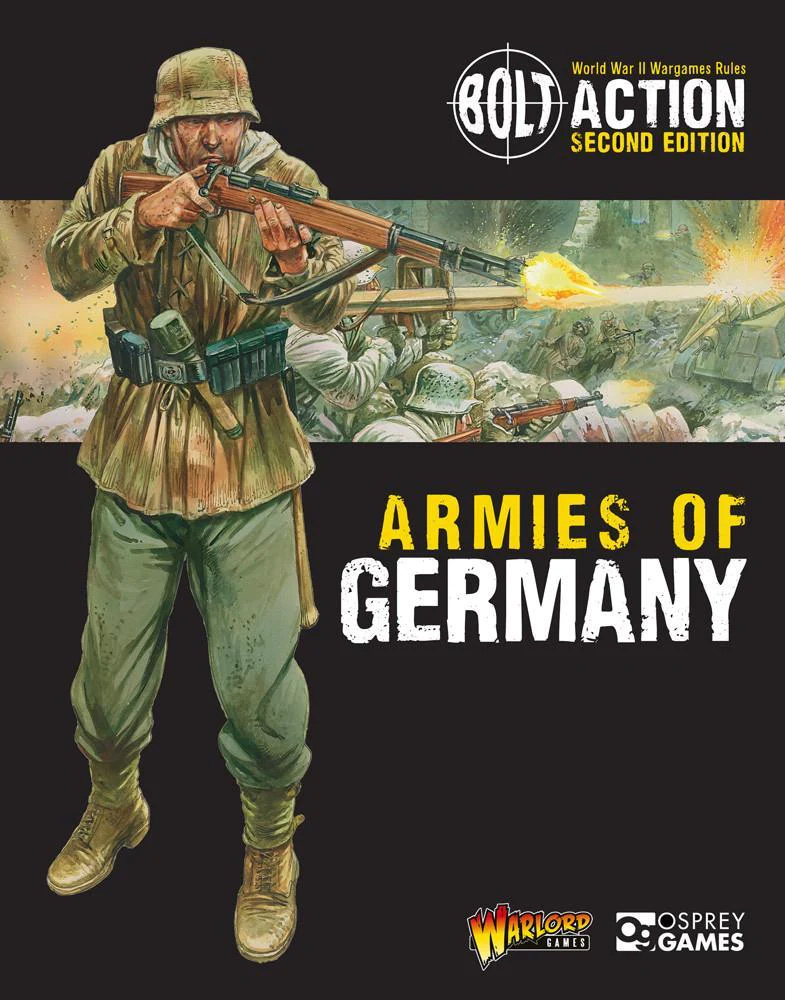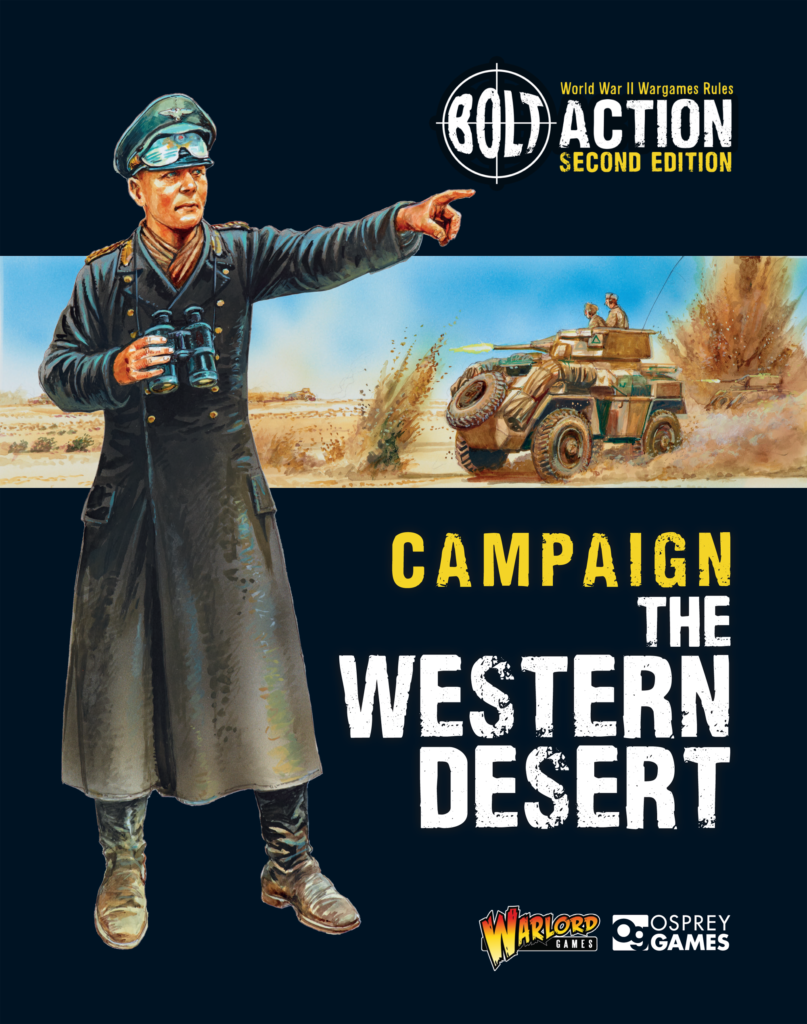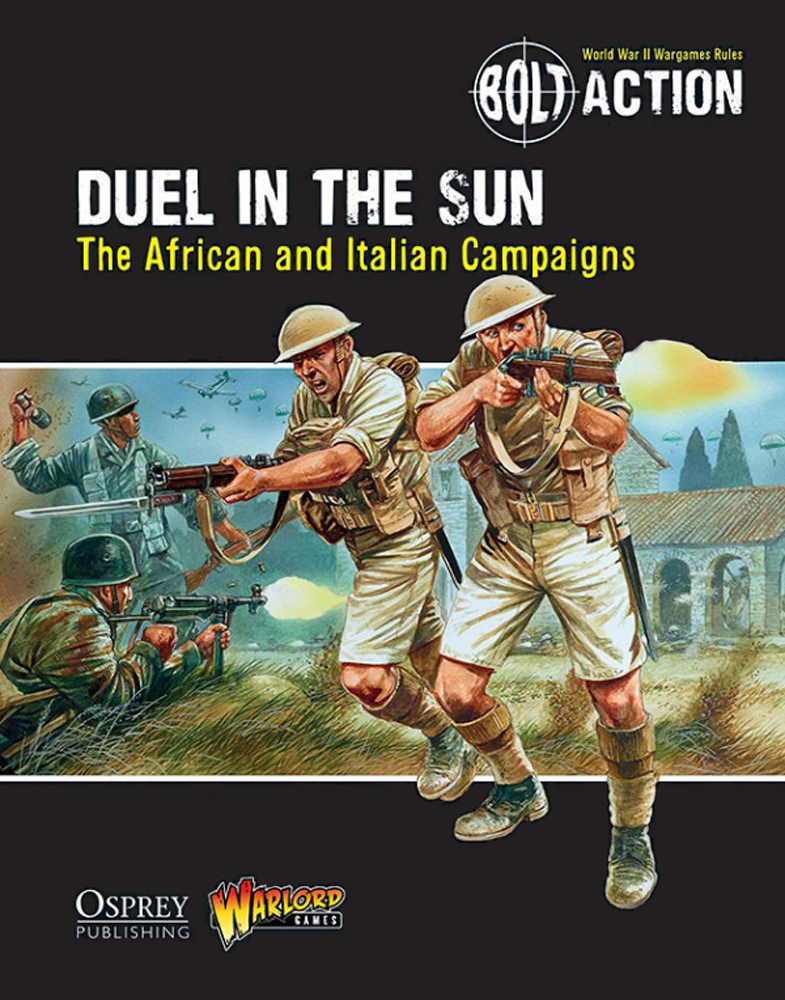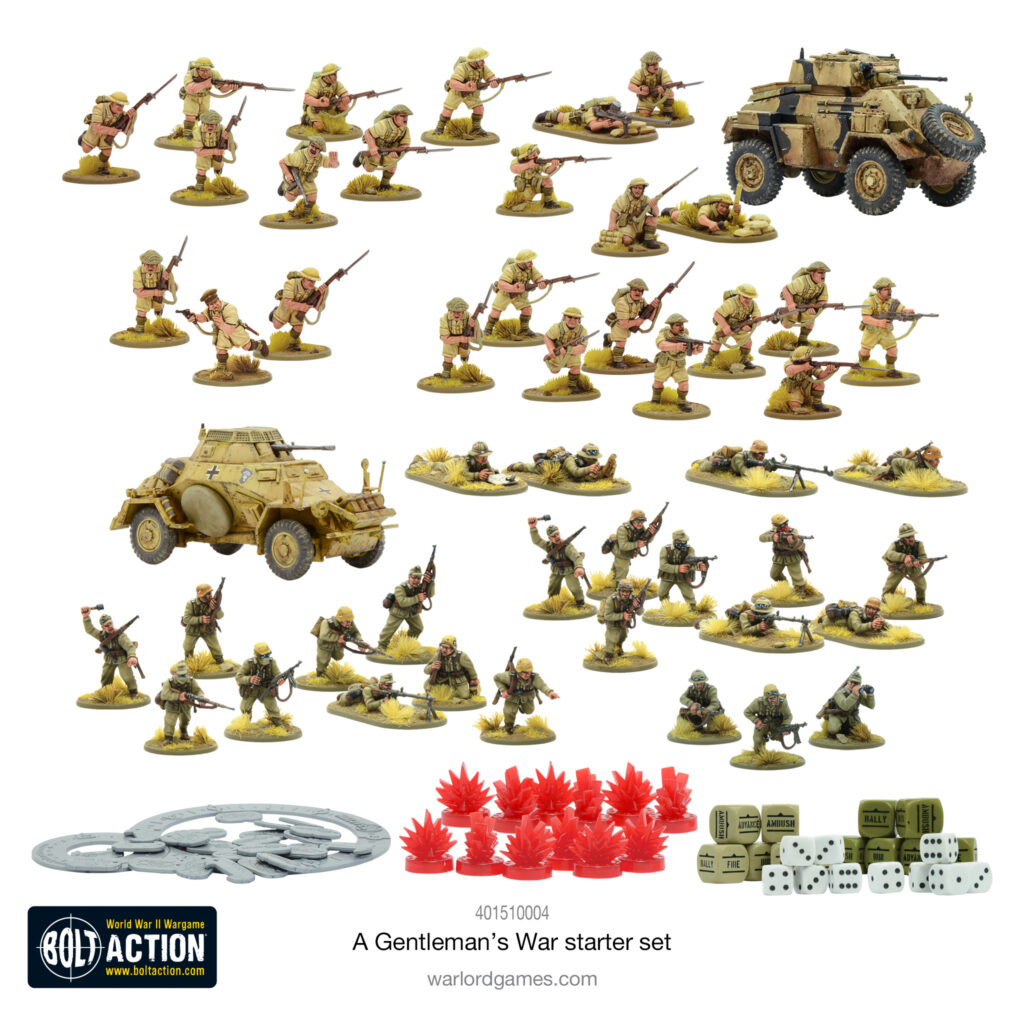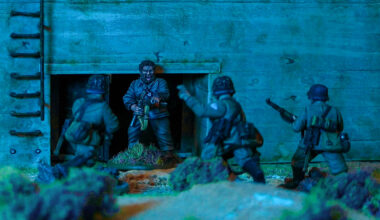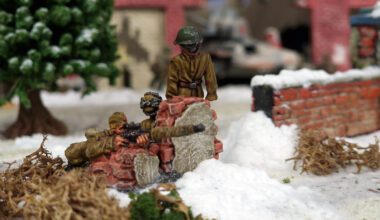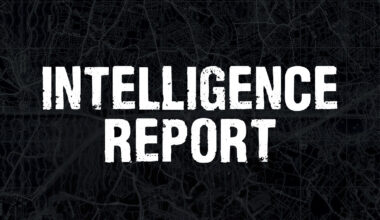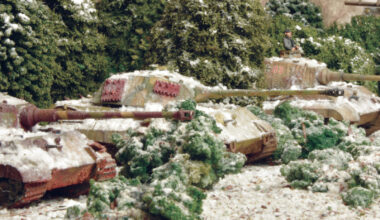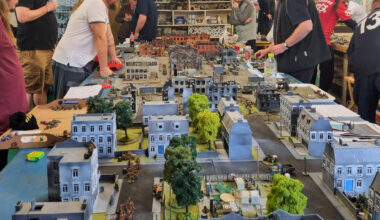In the first part of this series, we explored the tanks used by the British and Commonwealth forces in the Western Desert campaign, and there were a lot of them! This time we’re taking a look at the Panzers of the Deutsches Afrikakorps (DAK), and with typical German efficiency, there aren’t nearly so many types. It’s important to note that this series is just covering the tanks – armoured cars, assault guns, and self-propelled artillery will get their own reviews in the fullness of time, but for the moment it’s turrets-only on the guest list.
As the Wehrmacht used a sensible, logical numbering system for their tanks (unlike their British counterparts!), we’ll begin with the Panzer I. Obsolete even before the war began, the Panzer I was really designed more as a training vehicle to familiarise the new Panzertruppen (armoured troops) with tank operations, but due to a shortage of more modern vehicles large numbers did see service, both in Europe and Africa. While never designed to engage armoured vehicles (being armed only with machine guns and possessing armour intended to protect against small-arms fire only), they did see service as reconnaissance vehicles for a time, while many were converted into specialised vehicles such as tank destroyers and command tanks. For Bolt Action players collecting a really early Afrika Korps force, the Panzer I can actually be quite a useful little vehicle! At a mere 70 points for a pair of MMGs and a 7+ Damage Value, it’s certainly vulnerable to anti-tank weaponry, but can really do a number on infantry caught in the open. Don’t forget, the Hitler’s Buzzsaw rule means that it’s 12 shots total, rather than 10!
Following on from the Panzer I is, naturally, the Panzer II! Better armoured than the Panzer I, and mounting a 2cm autocannon, it formed the mainstay of the Panzer divisions in 1939, and many also saw service in Africa. The autocannon was ineffective against the majority of Allied tanks, which rapidly consigned the Panzer II to the same reconnaissance role as its smaller cousin, but it was a capable vehicle for its era when used against infantry and light vehicles. As with the Panzer I, many were converted into tank destroyers and self-propelled artillery, whilst later in the war the design was revisited to produce the Luchs (Lynx) – although of course this did not see service in the desert! For those Afrika Korps commanders wanting a low-cost light tank to menace enemy infantry and softskins, the Panzer II is a great economy choice, and the 8+ damage value gives it a fighting chance against early-war anti-tank guns.
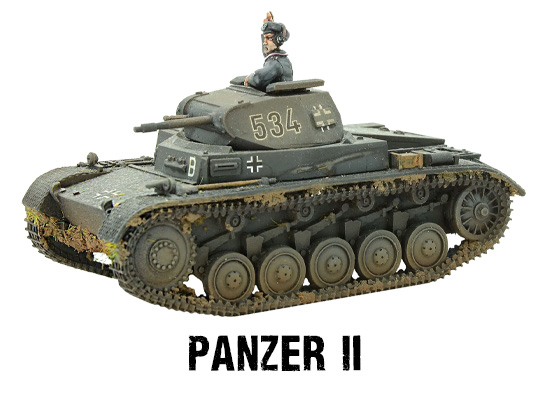
The Panzer III was really the first modern tank design to serve with the German forces. Designed to engage enemy tanks while the companion Panzer IV engaged infantry, it initially mounted a 37mm anti-tank gun along with a pair of co-axial machine guns, although this was later upgraded to a 50mm example in the Ausf.G variant – this was the majority type in service in the desert. A capable and well-regarded vehicle, the 50mm gun was effective against the more lightly-armoured British cruiser types, but struggled against the heavier Matildas and Grants. As the war in Europe progressed, the Panzer III became progressively obsolete and was largely replaced in service by the Panzer IV and later the Panther, but nevertheless soldiered on in the desert throughout the North Africa campaign. On the tabletop (courtesy of the recent FAQ!) the early Panzer IIIs can put out a whopping 18 MMG shots per turn from their hull and co-axial guns at a relatively low points cost. While still a light tank with all the vulnerabilities that brings, the medium anti-tank gun of the Ausf.G model can be very handy indeed against a wide variety of armoured opponents.
Designed originally as an infantry support tank armed with a short-barrelled 75mm howitzer, the Panzer IV was one of the most widely-produced tanks of the war, and served from the very beginning to the very end in the form of almost a dozen different variants. The majority of the Panzer IVs in the desert were Ausf.E and F1 models, and provided effective anti-infantry and anti-fortification firepower in support of the DAK advances. It could not, however, effectively engage Allied armour, and with the Panzer III increasingly struggling against heavier enemy vehicles, the Panzer IV was up-gunned with a powerful long 75mm anti-tank gun. The vast majority of these, designated F2, (and later the G, being virtually identical vehicles) saw service in Europe, particularly on the Eastern Front, but a few dozen were sent to North Africa, where the British came to know and fear them as the ‘Panzer IV Special’. These were more than capable of destroying all Allied tanks in the theatre, although the type’s thin armour earned it the derisive nickname of ‘Sardine Tin’ from its crews. In games of Bolt Action, the earlier howitzer-armed models are a great way to get some more HE goodness into your force, as well as benefitting from the 9+ Damage Value of a true medium tank. The F2, meanwhile, is best represented using the Panzer IV G profile, and is for my money one of the finest tanks available to any commander in the desert. Boasting an impressive heavy anti-tank gun, it can threaten infantry and armoured vehicles with equal ease, and forces your opponent to really take notice!
Panzer IV Ausf. D
Although the Panzer IVs most famously used in the Western Desert were the Ausf. F, significant numbers of the earlier Ausf. D also saw service. Their short-barrelled guns were invaluable in the infantry support role, and were also more than capable of dealing with many of the more lightly-armoured Allied tanks they faced.
The brand-new plastic early-war Panzer IV, can be assembled as the Ausf. B, C or D variants. Available individually or within a money-saving three-tank zug boxed sets – ideal if you want to build one of each variant, or even if you want a trio of one!
With the Panzer V (better known as the Panther) not serving in Africa, we come to the final (and most infamous) tank of the Afrika Korps – the legendary Panzer VI, famed in history as the Tiger I. A few were deployed to North Africa for testing purposes, and proved incredibly resilient to Allied fire (although not invulnerable, as illustrated by Tiger 131). The monstrous 88mm main gun was capable of destroying all Allied tanks in the desert at combat ranges, and the type quickly gained a reputation out of all proportion to its actual impact on the war. By the time it arrived, the desert campaign was all but over, and too few were sent to make any significant impact. In-game, this behemoth comes in at almost 400 points, with a Damage Value of 10+, and of course the colossal 88mm super-heavy anti-tank gun, capable of annihilating even the largest of enemy vehicles, or blasting infantry out of existence with its HE shells.
Soldaten, start your engines! It’s time to drive the Tommies into the sea!
Essential Reading
All the rules required to field any of the discussed tanks in Bolt Action can be found in the Armies of Germany book. Additional guidance pertaining specifically to the desert warfare battles of North Africa, including bespoke theatre selectors, can be found in Campaign The Western Desert & Duel in The Sun. All three books are essential companions to those looking to replicate the feats of Afrika Korps forces using Bolt Action.
Get Started with Desert War Bolt Action
A Gentleman’s War is a brand-new Bolt Action starter set, pitting the forces of the British 8th Army (more commonly known as The Desert Rats) against their Axis foes, the Deutsche Afrika Korps. Containing two opposing plastic forces set amongst the conflict across the arid desert war of the North Africa campaign, A Gentleman’s War contains the Bolt Action rulebook as well as a theatre booklet that guides you through your first steps in the game. It’s everything you need to get started with Bolt Action.
A Gentleman’s War contains:
- A5 Bolt Action rulebook
- A Gentleman’s War – Bolt Action Starter set booklet
- 24 Afrika Korps plastic infantry
- 1 plastic Sd.Kfz 222/223 armoured car – exclusive to this boxed set
- 24 8th Army (Desert Rats) plastic infantry
- 1 plastic Humber Mk II/IV armoured car – exclusive to this boxed set
- Waterslide decals
- Plastic Bolt Action templates & tokens
- Plastic Pin Markers
- 6-sided dice
- Bolt Action Order dice
